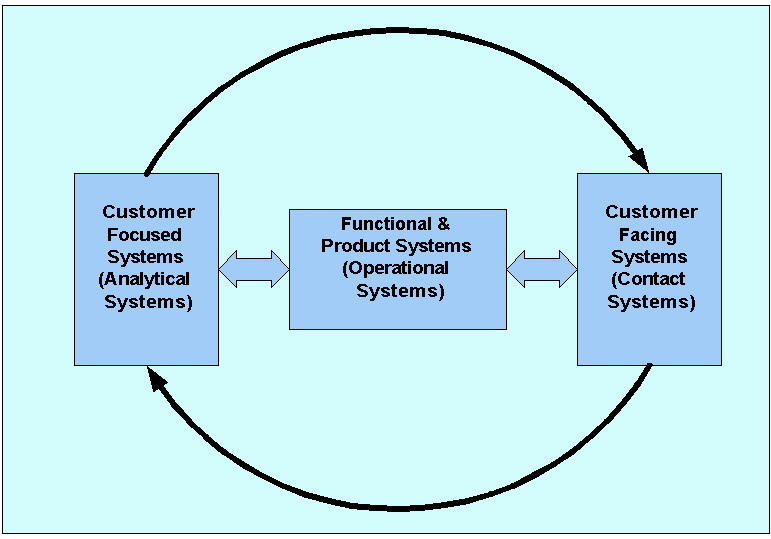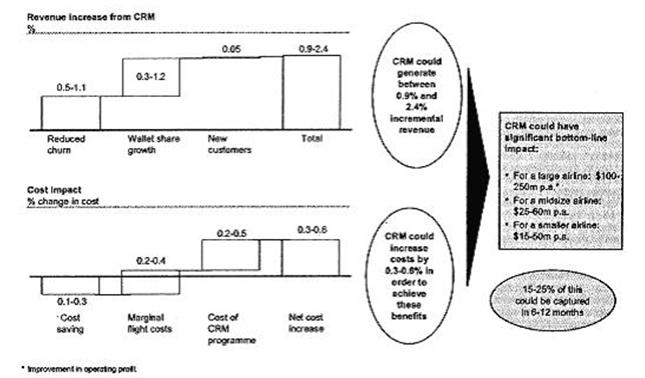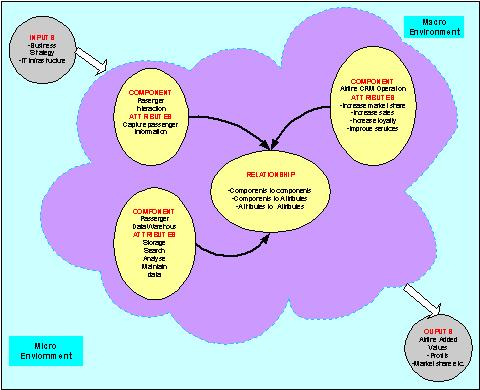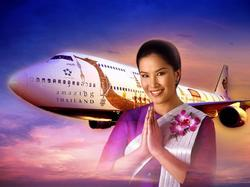Executive Summary
Over the past few decades, the worldwide airline industry has been grappling with some major challenges. Just a few of them are: the aftermath of September 11th attack in the US, the ever increasing and fluctuating world oil prices, the effects of the devastating global economic downturn, as well as political and social upheavals experienced in different parts of the world, particularly in the Arab countries over the decades.
It is this challenge that has left most airlines with dwindling margins against rising costs of operations. One way to deal with these challenges is to employ mechanisms to ensure maximum profitability and improved income with minimal or no wastage at all. But to be successful in the long run, companies should have strategies that must improve customer relations (Suriya 2009).
To attract, acquire, serve and effectively retain the customers, is the best approach to recover from the effects of these financial challenges. This is why the use of customer service management has become a critical part of any company that wants to build a strong customer loyalty and beneficial relationship.
The application of CRM to the airline industry has been on for a long time. However, the service has always been exclusive to first class and business passengers leaving the rest of other passengers without any services of such type (Jiang 2003).
It has become clear that the only way to build long lasting customer relations in phase of the foregoing challenges is to ensure that companies employ more focused customer relations management that cuts across all the clients according to their demands.
Recently, the challenges accruing from the changing economy, as well as the adoption of e-business are significant challenges that will also be examined here. This last aspect has been the driving factor behind the application of e-CRM, a component that is also described here (IBM Corporation 2008).
Industry Overview
There is no doubt that the invention of air travelling has not only collapsed the globe but has also contributed significantly to the exotic experience that has allowed the masses to move conveniently and do much business across the globe. It started from the recorded history of the activities of 1930s.
It was however in 1952, when the airplane and commercial travel as we know it today was realized. This was after the Board of Directors at Boeing Company authorized the manufacture of the first jet airplane, the project 367-80 and which we also know as 707 (Airline monitor 2006).
This was the first successful commercial airplane and its success has led to the replacement of the ship, as well as the craft, as the means of choice for mass transport across continents (Airline monitor 2006). This merger was a mutually beneficial one in which the SAS contributed as mush as 30% of the initial capital, expertise and training to the Thai Airways company.
To date, Thai Airways International Public Company (THAI) is the leading airline in the industry and it is wholly owned by the Thai people. It is the major carrier in the international and regional front (eTN 2009). Other airways mainly flying or operating domestic flights in Thai include the Nok Airways, Bangkok Airways, Business Air, Happy Air, Solar Air and Thai Air Asia among others (Thai Technic.com n.d.).
Customer Relationship Management in the Thailand Airline Industry-Current state of affairs
The program must ensure personalized attention to the customer and has to be consistent, proactive and experienced in all the points of contact between the airline and its clientele. It is also of great importance that any such endeavor must be an organization wide approach to secure the interest of all the clientele of an airline.
The employees of an airline organization must be empowered to deliver an ultimate unforgettable customer experience. It is imperative the Thai airlines must be prepared to handle all its customers right, the first time, every time and at any place or point of touch with the airlines (Suriya 2009).
Figure 1 illustrate the Key Elements of CRM Architecture.

Objectives
The application of CRM in the Thai Airlines can help ease the cash drought and the ever increasing competition from major international airlines. The year 2010 saw a reduction in the profitability of most airlines all across Thailand. The culprits of this fall were the political clashes which resulted in the entire major airways;
Thai airways international PLC, Airport of Thailand PLC, recording reduction and falling number of passenger travels. Moreover, shutdown of the European airspace in April 2010 buttressed this situation. The country recorded about 7% decline in flights to India according to Phromchanya and Setthasiriphaiboon (2010). At the same time, declines were reported on flights to China, South Korea, and Japan.
This decline saw the introduction of some strategies to help protect the industry from further losses. The strategies included special ticket deals, and reducing the frequency of some routes. In the same year, the Thai air traffic had targeted a growth rate of 10% and which was really affected by the unfolding events.
In spite of this, the year 2012 was expected to be a good year for improved tourism activity in Thailand as reported by Wood (2012). The countries’ economy was expected to bounce back from the effects of the man made and natural disasters of 2010.
- To ensure a responsive airline in Thailand, the airlines need to embrace CRM. Specifically this development will ensure the following objectives.
- To ensure revenue improvement for the airlines.
- To ensure savings best running of CRM.
- To ensure collaboration among all the players in the airline sector that will result in stability and profitability (Jiang 2003).
Strategy
Adoption of the CRM in Thai Airline industry must be based on a strategy that takes into account the challenges of dwindling fortunes, the fluctuating world oil prices, the fierce competition from other international players in this field, as well as the understanding the challenge put forward by the fact that customers are being spoiled having an access to a broad choice with a more flexible system that can easily allow them to defect from one airline to another (IBM Corporation 2008).
The following strategic adjustments are bound to bring about the best success for the Thailand airlines. The first strategy should be to embrace the Information technology and World Wide Web to ensure that customers can book and make enquiries about the airlines 24 hours a day.
This will reduce the sales cost by eliminating the travel agents. The last strategy is to embrace the usage of e-CRM to help attract retain customers and improve customer loyalty (IBM Corporation 2008).
The Drivers of CRM
The business environment will continue to be fierce
The business environment for the airline industry has been froth with numerous challenges that has revealed the fierce nature of the competition that the airline companies must sustain in order that they stay in business. From the ever fluctuating prices, the increasing competition from world’s major airlines and the open business environment, Thai Airline industry operates against a backdrop of major challenges.
These challenges force the Thai Airlines to be prepared to learn and track the needs, behaviors and the lifestyle of their clientele. It is only by using this information for value positioning that the Thai Airlines would be able to attain customer loyalty.
This information will also ensure selective competitive advantage and unique positioning all necessary to thrive against the competition. This calls for deeper application of the CRM within each organization (IBM Corporation 2008).
The cost of attracting and Retention of customer loyalty gets exorbitant
As it has been mentioned previously, the e-business and the new economy have bred challenges to the airline businesses across the globe. It is this heightened activity that has left many airlines putting in place all manner of plans to woo and keep their customers..
According to Chen and Popovich (2003) a company loses 50% of its customers after every five years. This indicates that companies are always at a state of flux which involves attracting new customers every so often.
In the same report, Kalakota, reports that it takes 5 to10 times more resources to acquire a new customer as it would take to keep old ones (Chen & Popovich 2003). This is a clear reason for encouraging companies to retain customers based on long term relationship as opposed to always looking for new ones.
More challenging is the fact that the recent developments in the liberalizations of the airline industry that begun from the early 1970, has led to customers wielding real customer power that leaves the airline companies with no choice but to put in place mechanisms to retain their customers if they wish to stay afloat leave alone to thrive.
Customer relations therefore remain key to ensure airline growth and this is the very reason Airlines in Thailand can no longer ignore the CRM approach (Airline Monitor 2006).
Developments in information Technology has led businesses to afford use of CRM effectively
The changes in the information technology front have made the actualization of CRM such as challenging task for many organizations. At the same time, this change may be considered a fundamental advantage in leveraging on old customer relation strategy that if effectively employed, would result in improved sales and profitability for the airline industry.
In any given trip, a traveler is likely to have multiple interactions with the representatives of an airline company with each interaction giving the traveler a chance to judge the level of service offered to them by the airline (Suriya 2009).
All these interaction points make uniform and consistent delivery of awesome customer experience even more challenging. This can effectively be resolved by creation of customer contact centers as avenues to ensure excellent customer experience, the first time, every time, and at all points of interaction in all areas (Hutchinson 2012).
Some of the possible advantages of the CRM in the airline industry are captured in the figure 1 below adopted from (Phisanu and Piyarat 2010).

Leveraging CRM to e-CRM
As companies strive to move from CRM to e-CRM, the swift is likely to bring gains for the Thailand Airline industry. Specifically, e-CRM is likely to reduce customer defection, as it allows for more efficient handling of the customer while at the same time allows for their complaints to be handled in real time through the customer contact centers.
Second, a company is able to achieve increased competitive differentiation and value positioning that is unlikely to be aped by others. This is possible as the company personalizes each customer experience in a way that is unique to customers’ satisfaction.
The airlines will be able to improve brand image, experience high customer loyalty and thus rank in more income. This improvement comes as the increase in a companies’ market share, as well as a healthy bottom line (Hutchinson 2012).
Successful CRM and e-CRM Strategies in the Thailand Airline Industry
Airlines and any other businesses for that matter have a chance to ensure improved attraction and retention of customers if only they allow all the activities to be customer centric. This includes their operations, strategies and all areas of business. Thailand Airlines might use the model below that shows the various interactions between the various micro and macro-environments in which the airlines operate (Case Study 2008).

Drivers of change in the Thailand Airline Industry and implications for Changes in CRM strategies over the next three years
As we approach the next few years we can only say that the appreciation of CRM as a customer attraction and retention model within the airline industry has just begun. The challenge is unparalleled, but Thai Airline has done well to apply this concept in the face of the very many challenges they face. The key drivers of change within Thailand’s Airline industry can be summarized as:
- The desire to better connect customers to the airline more conveniently.
- To utilize the digital information sharing that leads to reduced cost of sales and overheads.
- The desire to compress place and time for customers. Last is the need to have CRM updated in real time (aMaDEUS 2012).
And with these changes Thai Airlines can be prepared to fly high and compete even with the worlds’ best airline companies.

The Future CRM focus activities in Thai Airlines for the next three years
Based on the key drivers listed here, there is an emerging trend in the nature of activities that shall be the mainstay of the implementation CRM strategies in the Thai Airline Industry. Facing fears competition due to the rapid changes, occurring in the Thai Airline industry, the major players have very limited time within which to respond to theses challenges or else face dire consequences.
The next ten years is surely going to be a reaping time depending on what a company has sown with regard to activities that are directly a manifestation of this delicate industry. Obviously, there has been a very serious misunderstanding of CRM applications in some industries where, instead of giving it a long term approach, many Airlines have looked at this as a distinct component that they often airline to common flying practices.
The challenge of these three years must be a shift in the operationalisation of the CRM application and adoption or implementation. Customer relationship that caters for the very value and need s of the customer must be the focus of the current implementers of this strategy.
Airline companies must strive to optimize the activities that generate positive customer feed back that attracts productivity and loyalty. It is only this approach that will ensure that the companies augment and keep generation revenue for the development of the very crucial functions within the competitive environment in which they operate.
They must focus on creating mechanism to get hold of and hang on to their high value customers with lots of precision to ensure improved results. The strategies of CRM that ensure reduction of costs of operations awhile guaranteeing customers the ultimate experience must be the core of all customer relation mechanisms put forth by the Thai Airlines (Munusamy et al. 2010).
Conclusion
Of late, the factors such as the pre-flight boarding services, cabin crew handling and their positioning, as well as the services offered are closely related to the extent to which customers feel catered for (Munusamy et al. 2010).
The overriding finding is that most airlines world wide and the Thailand in particular do not only look at price differentiation as the only way to attract and retain customers. The customers are now more than ever before have now focuses on issues of building better relationships with their airlines.
CRM implementation must therefore focus on bringing about a holistic airline commitment that embodies the decision of every one within the organization and particularly starting from the top management. There must be a clear distinction between the frequent flyer progrmammes offered by most airline companies and the requirements of the much desired change in the implementation of the new CRM technology.
It is evident that the reliance of most companies on the segmentation of their clients based only on mileage is an idea that has been overtaken by the many unprecedented events and changes happening in the Global airline industry as a whole.
Companies are in a better position to facilitate their business and client segmentation based on the value and the needs of these clients. The initial segmentation criteria had the problem of overlooking the fundamental and unique differences of the needs of most of the customers leaving high value customers discontent with the services offered.
Moreover companies must act boldly and courageously to avoid acting as followers but as leaders in the very field where they operate. They must be creative and innovative to capture their high value customers and corresponding revenue.
The needs of the new market environment demands that the organizations design management systems which are customer oriented and cutting across the whole organization. They must help their employees to understand the challenge to have a complete view of the customer and to offer their leadership and supporting role to ensure successful implementation of the CRM.
The use of CRM is seen as the best bet for the airline industry to attract and retain customers with a bid to aging out competition while maintaining customer loyalty. It however unfolds that companies will have to adopt both e-CRM and CRM at the same time so as to take advantage of the developments in IT, as well as on internet (Paul & Hartmann 2003).
The development of customer analysis tools that support quick decision making by organizations should be the focus of e-CRM. This must be accompanied by the laying out of a support infrastructure. It is this customer information that is vital for the understanding of the different levels of services required based on genuine customer value.
Use of e-CRM will definitely lead to better operational decisions and act as a tool for both long term and short tem efficiencies. The Airlines will reap from a strong relationship management with the benefits of enjoying long term growth in spite of the competition.
Reference List
Airline monitor 2006, A review of trends in the airline and commercial industry Airlines 101- A Brief History of the Airline and Commercial Aircraft Industries. Web.
aMaDEUS 2012, From Chaos to collaboration- Insight into the future of travel. Web.
Case Study 2008, Classic Airlines Scenario. Web.
Chen, I. & Popovich, K. 2003, “Understanding customer relationship management (CRM): People, process and technology”, Business Process Management Journal, vol. 9, no. 5, pp.672–688.
eTN 2009, Thai and Nok air join forces to boot domestic and regional air travel. Web.
Hutchinson, D. 2012, Customer experience management in the airline industry. Web.
IBM Corporation 2008, Customer Focused Airline: A Vision for Airline CRM. Web.
Jiang, H. 2003, Application of e-CRM to the Airline Industry. Web.
Munusamy, J., Chelliah, S. & Pandian, S. 2011, “Customer Satisfaction Delivery In Airline Industry In Malaysia: A Case of Low Cost Carrier”, Australian Journal of Basic and Applied Sciences, vol.5, no.11, pp. 718-723.
Paul, H. & Hartmann, J. 2003, “The World Airline Industry: A European Perspective”, Fachhochschule Mainz Case Series, p. 303.
Phisanu and Piyarat 2010, Thai airline industry traffic passengers down. Web.
Phromchanya, P. & Setthasiriphaiboon, P. 2010, Thai airline industry: Traffic, passenger numbers are down. Web.
Suriya, C. 2009, “The impact of low-cost airline to airline industry: An experience of Thailand”, Journal of Economi Malaysia, vol. 43, pp. 3-25.
Thai Technic., Airlines in Thailand. Web.
Wood, A. 2012, Upbeat prediction for Thailand tourism from new Skal Thailand national president. Web.